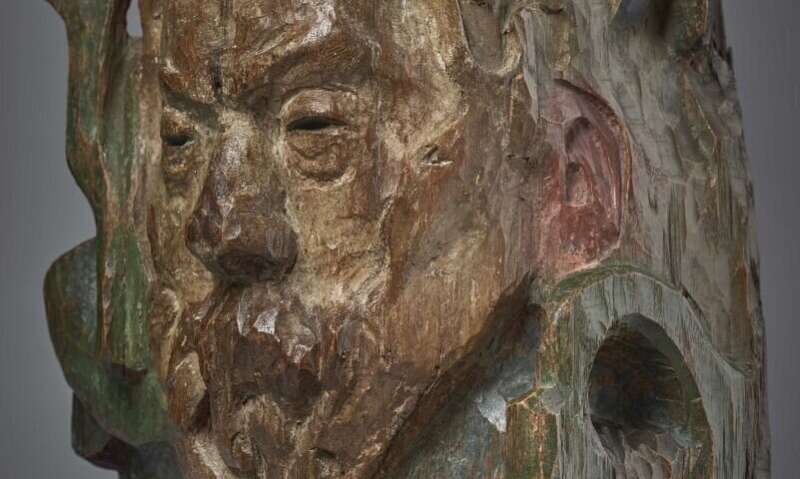Synchrotron reveals important information about famous sculpture by Paul Gauguin

Analysis carried out by Conservation Scientist Dr. Eric Henderson at the Canadian Light Source (CLS) at the University of Saskatchewan allowed National Gallery of Canada's (NGC) Chief Conservator Doris Couture-Rigert to conclude a crucial aspect of her research on an important sculpture by Gauguin in the museum's collection.
Gauguin was one of the 19th century's most influential artists and the NGC is currently featuring his works in an exhibition called Gauguin: Portraits. Gauguin's Portrait of Meijer de Haan is one of the centerpieces of the exhibition and has been the subject of intense technical research carried out by Couture-Rigert over the last four years.
To support this research, paint and pigment analyses were performed in several phases by conservation scientists in the Conservation Science Division at the Canadian Conservation Institute (CCI). As part of these analyses, CCI Conservation Scientist Dr. Henderson and his colleagues identified beeswax in paint samples from the sculpture which raised the question of its function within the paint.
There were two possible explanations, said Henderson. One theory was that the wax indicated the artist used encaustic paint (heated beeswax to which colored pigments are added). The second, more likely answer, is that the wax was applied as a coating over the paint. In fact, Gauguin often advocated for the application of a wax-based coating on his works.
To elaborate upon the initial CCI findings, Henderson conducted Fourier-transform infrared spectroscopy (FTIR) mapping of paint cross-sections at the Mid-IR beamline at the CLS in February. This technique involves plotting the integrated absorbance of characteristic vibrational bands of select materials as a function of position to obtain their spatial distribution across the cross-sections.
The synchrotron results confirmed that the beeswax was applied as a coating over the paint, said Henderson, who is a specialist in material analyses of museum and cultural heritage objects. The data also showed that the wax had infiltrated the upper layer of paint, and this helped explain an observation by Couture-Rigert of a darker, more saturated layer of paint at the surface. As well, the origin of the beeswax in the paint as a result of infiltration of the wax coating and the finding of protein in the paint supported analysis results, suggesting that Gauguin used protein-based distemper paint on the sculpture.
Some of the conclusions of the FTIR mapping experiments performed at the CLS, many of CCI's analytical results, and other NGC research findings are presented in the exhibition in a dedicated space.
For Henderson, the availability of the synchrotron bodes well for advancing conservation science. "This is a great example of the capabilities of analytical techniques and analytical sciences to explain and document heritage works, and we are definitely exploring other possibilities," he said.
As for Couture-Rigert, the work performed at the synchrotron provided the much-needed confirmation of the exact location and level of penetration of the wax within the paint layer in order to draw the final conclusions.
Provided by Canadian Light Source





















